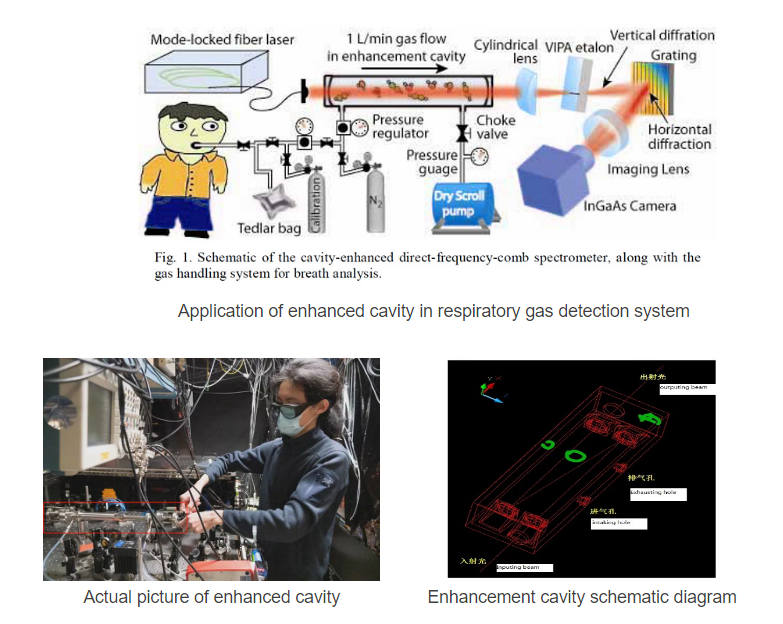Enhanced cavity
The enhancement cavity is an optical cavity (resonant cavity) used to resonantly enhance optical power or intensity. When the incident light resonates with the cavity and matches the mode, the optical power in the cavity is much greater than the incident power. Enhanced cavities have a wide range of applications, such as trace gas detection, spectral analysis, absorption spectroscopy, etc.
Conditions for efficient resonance enhancement:
In order to make the resonant cavity work efficiently, the following factors need to be considered:
- Resonance conditions require that the cavity length be within a wavelength range. To maintain resonance longer, an electronic feedback loop is often used. This feedback loop occurs either by changing the frequency of the laser to match the cavity frequency, or by changing the cavity length via a piezoelectric driver. It is important to note that for a high-resolution cavity to achieve a large degree of power enhancement, the stability of the cavity and laser must be very high.
- The incident light must be mode-matched to the cavity and requires appropriate geometric optics to focus and align it. In addition, the radiation light needs to maintain diffraction-limited beam quality during transmission.
- The loss can be minimized through back reflection of the pump optical power, and the enhancement cavity needs to meet the impedance matching. That is, the transmission coefficient of the incident end mirror is equal to the other loss values in the resonant cavity.
Enhancement cavity in mode-locked laser:
To resonantly enhance the cavity, it is usually used in combination with single-frequency lasers and can also be used with mode-locked lasers. In the latter case, the cavity length needs to meet certain conditions, that is, the light round-trip time in the cavity is equal to an integer multiple of the pulse interval. That is to say, the free spectral region of the cavity is an integer multiple of the laser pulse repetition frequency, so the comb teeth (frequency comb) of the laser output all satisfy resonance. Moreover, intracavity dispersion and nonlinear effects cannot be too strong.
In recent years, some people have used enhanced cavities combined with strong ultrashort pulses to produce high-order harmonics with very high pulse repetition frequencies. One of the problems encountered is the need for very precise intracavity dispersion compensation, resulting from the very high light intensities in the resonator mirrors and other optical components, and from the beam induced by plasma generation in the gas used for higher harmonic generation. distortion.
We can provide enhancement cavities for single-frequency lasers and enhancement cavities for mode-locked pulse lasers according to your needs. Please contact us for a detailed discussion.
